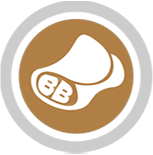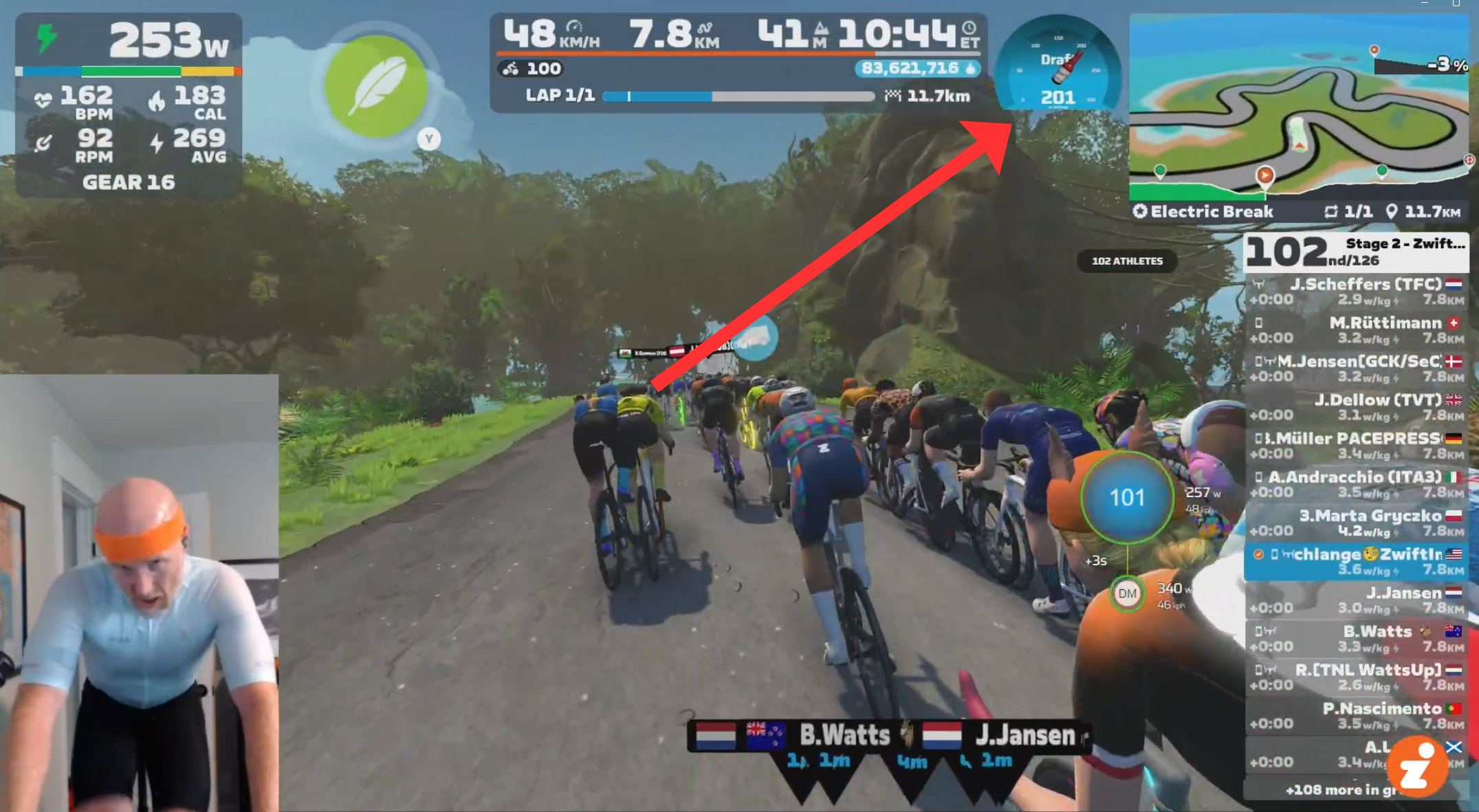Unless you plan to always ride alone, drafting is an essential skill for the cyclist – both indoors and out. Here’s everything you need to know about drafting in Zwift.
Why Draft?
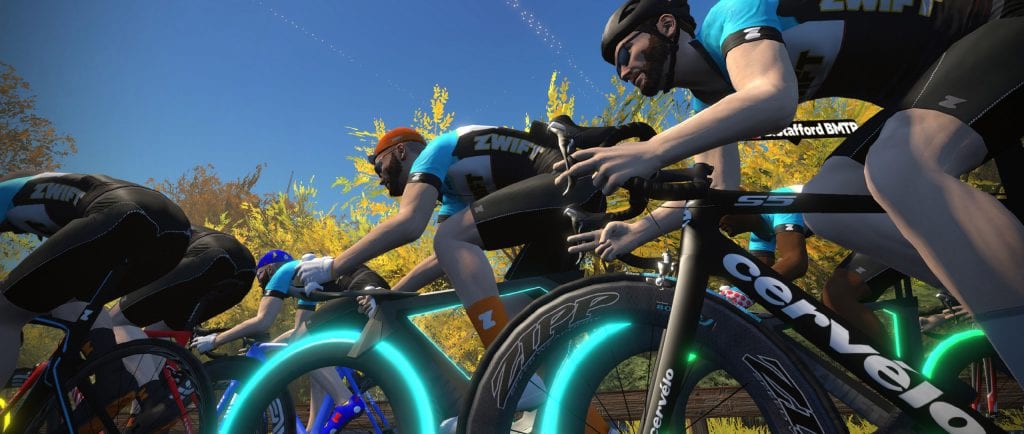
The goal of drafting in Zwift is to conserve energy, just as it is outdoors. The amount of energy saved by drafting is no “marginal gain” – it is literally the difference between winning and losing in every bike race.
Estimates vary, but the most common figure mentioned outdoors is a 30% power savings when drafting behind just one other rider. It’s just physics: air resistance is the number one force slowing you down when you’re moving at speed, so if a rider just ahead is in the wind and you’re on their wheel, you’ll be able to travel at the same speed with less effort.
Example: you could put out ~210 watts while drafting and maintain the same speed as the rider ahead of you who is putting out ~300 watts, assuming you’re both the same size, weight, CdA, etc.
Riding in a large pack will reduce wind resistance even more, resulting in greater power savings. Scientists studied the draft effect of a large peloton (121 riders) and found that wind resistance in the “sweet spot” of this large group was only 5-10% what a solo rider would experience. Incredible!
Drafting Power Savings in Zwift
Based on our tests, drafting in Zwift behind a single rider gets you a power savings of approximately 25%. Using power emulators on a closed course, we had one rider sustain 300 watts while another rider drafted behind. We found a rider could stay in this 300-watt draft at ~225 watts while on relatively flat ground.
Changes in pitch affect these numbers, as gravity comes increasingly into play. Using the above power numbers, the front rider will pull away on an incline. But when a decline hits, it will take even fewer watts to stay in the draft. For more on how gradient affects drafting, see Saving Watts In the Draft: Climbs vs Descents vs Flats.
The draft effect in Zwift is enhanced in larger groups, although it’s not as significant as we see outdoors. See our most recent tests of 4-rider drafting for more info.
The Challenges of Zwift Drafting
Zwift HQ has done a commendable job with their drafting algorithms to create something that works well in small and large packs for a variety of riders. That said, drafting in Zwift takes some getting used to, even if you are familiar with drafting in real life. Here are the differences:
- No steering: outside, you can steer in and out of a draft, but on Zwift, many riders don’t have steering devices, which leaves their left-right positioning up to the game’s pack dynamics algorithm. This means sometimes the game doesn’t position you for maximum draft effect.
- No brakes: when you ride outside, you can tap your brakes to maintain the proper distance off the back tire of the rider in front of you. Unless you have Zwift Play paired and braking enabled, you don’t have braking capability in Zwift, so your front-to-back position in the pack becomes a matter of putting down the right amount of power at the right time.
- Limited and delayed sensory feedback: outside, you can feel when you’re in the draft: the air resistance decreases and you don’t have to work as hard to keep the pace. On Zwift, there are very limited cues as to when you are in the draft or not, and resistance does not decrease when drafting. Additionally, if you need to modify your power output to stay in the draft, the response (your avatar moving in response to your power change) is not as immediate as it would be in real life.
Drafting Cues
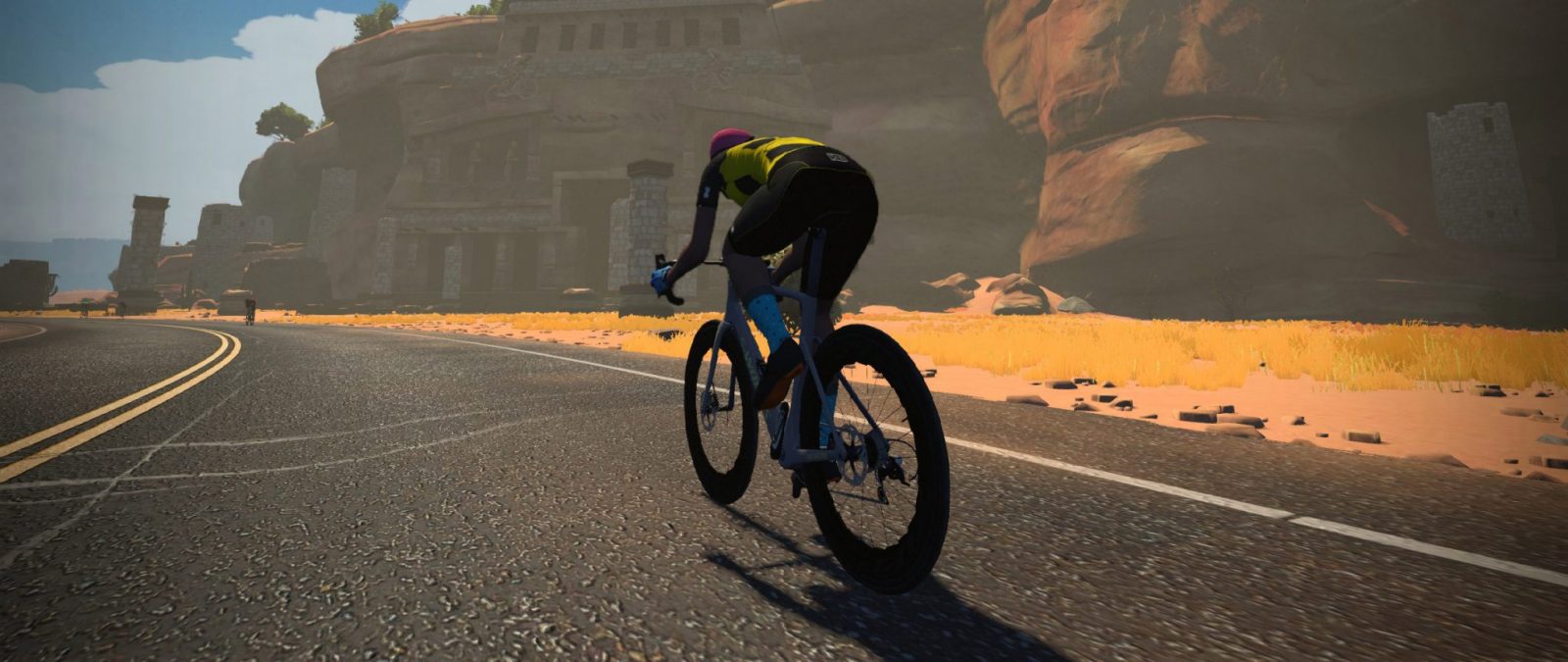
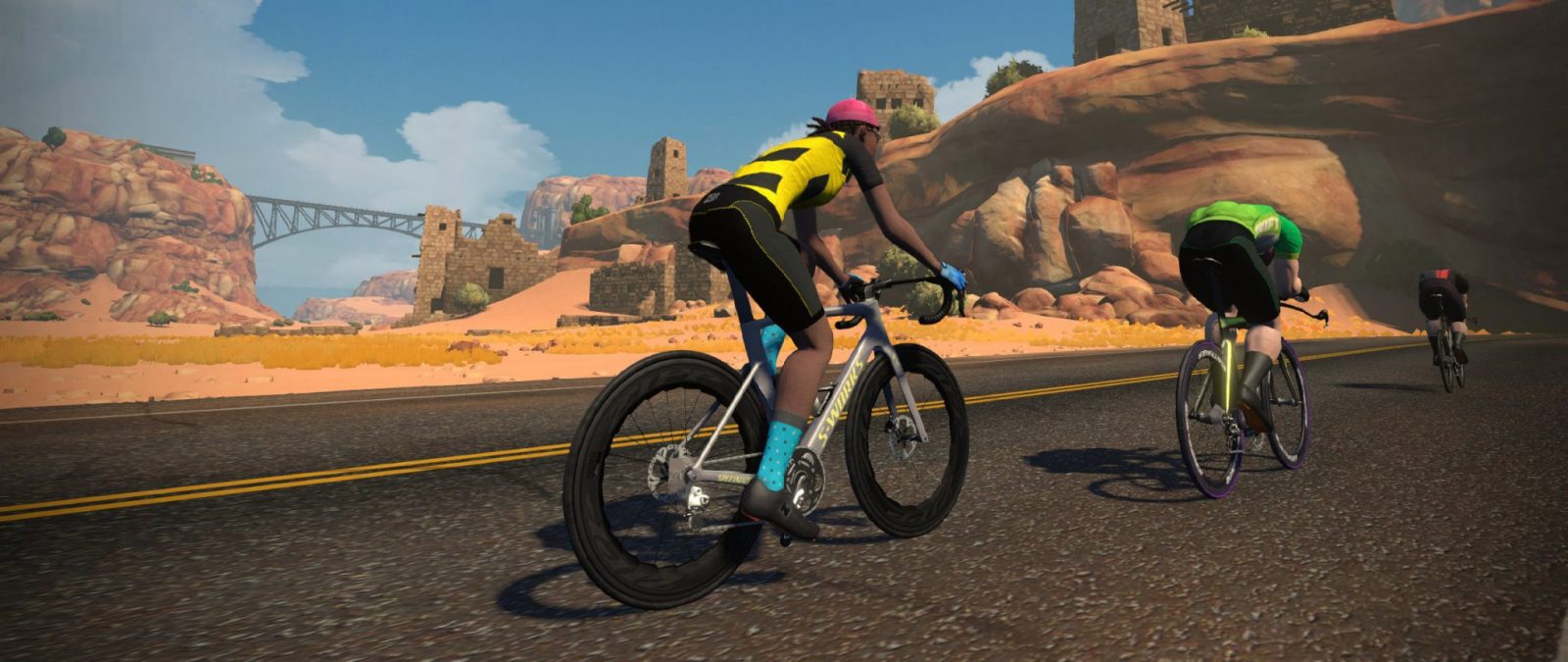
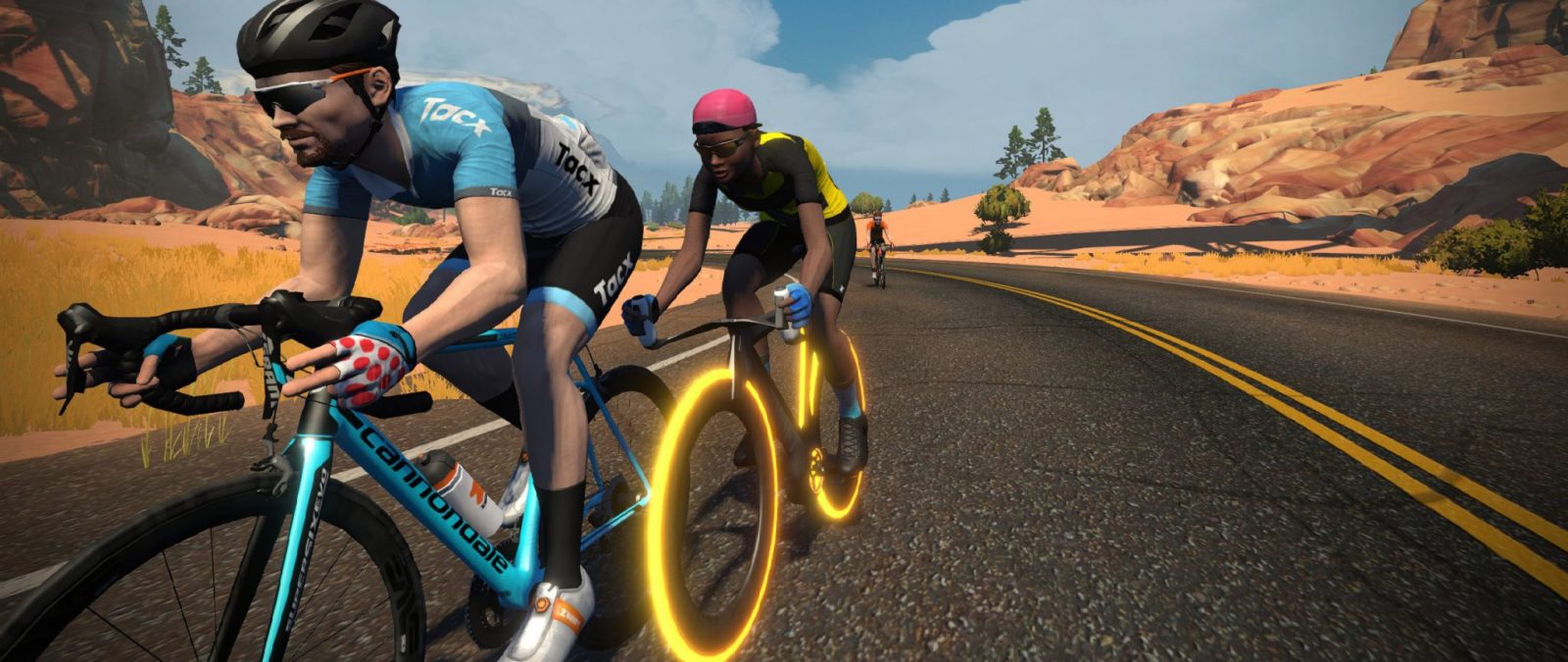
Zwift uses the visual cue of sitting up (riding with your hands on the hoods instead of the drops) as an indicator that you are in the draft. It only shows your avatar sitting up, though, and not those around you, even though they may be drafting.
This is what you’ll see at typical speeds when riding on Zwift. But there are exceptions, which mean your avatar sitting up doesn’t always mean you’re drafting, and being in the drops doesn’t always mean you’re out of the draft:
- Zwift will also have your avatar sit up at slow solo speeds (~32kph or slower)
- Zwift will put you back on the drops at high speeds (~50kph+) on descents of 3% or more, even though you’re drafting
From a stop, your avatar will begin riding on the hoods, but as you speed up to 32-33kph your avatar will move to the drops. If you are in the drops and begin to slow down, your avatar will move to the hoods as you hit 29-30kph. This, obviously, mimics what riders might do IRL, as does moving to the drops at high speeds on descents.
A few more details: the Tron bike has no “sitting up” animation, so even though you are experiencing the draft effect, your avatar will never change position on the Tron. TT bikes have no “sitting up” animation either. And on mountain bikes, your avatar sits a bit higher when not drafting.
More Drafting Tips and Notes
Draft Boost (Van) Powerup
The draft boost powerup increases the strength of whatever draft you are experiencing for 40 seconds. It only works if you are in the draft, so use it in the pack to save some energy.
Dial It In
Because of how Zwift’s pack dynamics work, there is a “wattage window” within which you can hold a rider’s wheel. For example: you may be holding a wheel at 240W, but if you reduce your power to 220W you’ll may still be able to hold the wheel.
In a small group, it’s worth easing off the pedals to figure out just how much power you actually need to hold the wheel, so you aren’t putting out more power than necessary.
Steering Challenges
Since Zwift steers for you automatically, you may at times find yourself being steered out of the draft. If this happens while you’re attempting to stay in the draft, simply keep your power at a level that keeps you in a good position to get the draft, and Zwift will typically steer you into the draft soon enough.
Alternatively, if you have a steering device, you may find that manually steering will place you in a stronger draft position than the game’s automatic steering.
TT Bikes Do Not Draft
On Zwift, TT bike frames do not experience a draft effect unless you are in a special event (usually only team time trials) where TT drafting is enabled. You can draft behind a TT rider, but the TT rider will not get any benefit from riding behind anyone else.
Flick that Elbow!
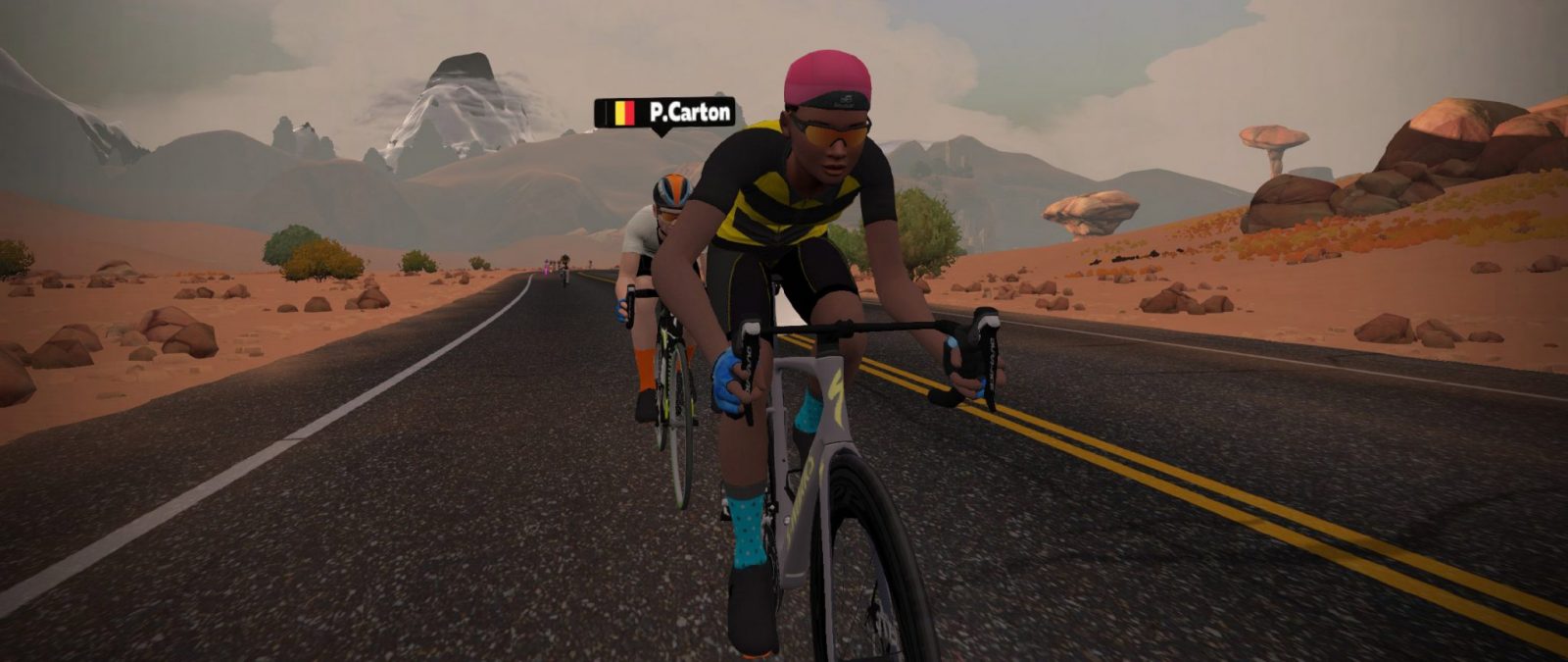
Just like outdoors, you can use the elbow flick motion (F1 on your keyboard, or in your list of motions on the Companion app) to signal to other riders that it’s their turn to take a pull.
The Supertuck and Drafting
The supertuck may be outlawed by the UCI, but it’s legal on Zwift. There’s just one caveat: you have to be out of the draft in order to supertuck! That means in a race, only the rider on the front of the pack will be able to supertuck, assuming the other conditions are met (~36MPH/~58km/hr, -3% or more downhill, power below 11W). Read more about the supertuck here >
Breakaway Burrito Powerup
As the name lightly suggests, the Breakaway Burrito is the only powerup that affects those around you. When the Burrito powerup is activated, it turns off the draft benefit for riders in a cone shape behind you, for 20 seconds. Learn more about the Burrito here >
Get Saucy
If you run Zwift on Windows or Mac, you might consider installing the Sauce for Zwift add-on, which includes a helpful draft gauge which supposedly displays how many watts you’re currently saving. (That’s up for debate, but in practice, the gauge is helpful because it shows how strong the current draft effect is, regardless of what it’s actually measuring.)
See it below from a video of a recent race. Read more about S4Z here >
Questions or Comments?
Got questions about drafting on Zwift? Share below!

